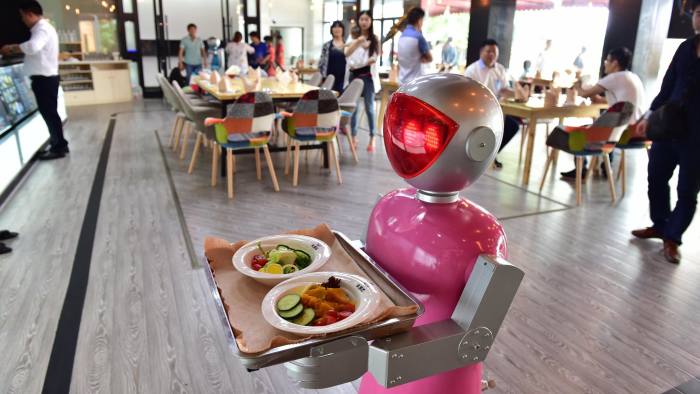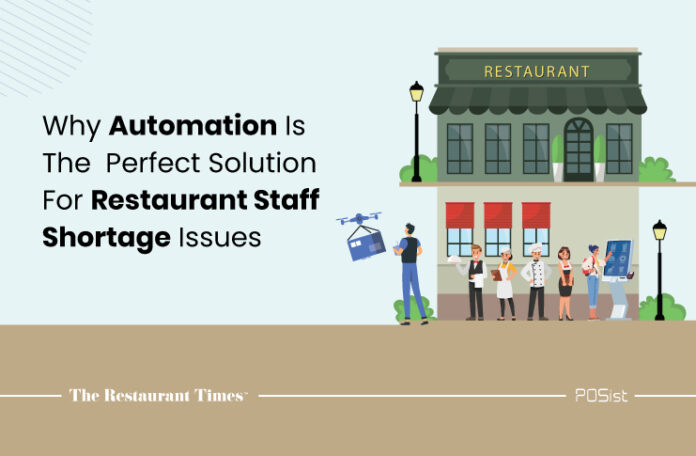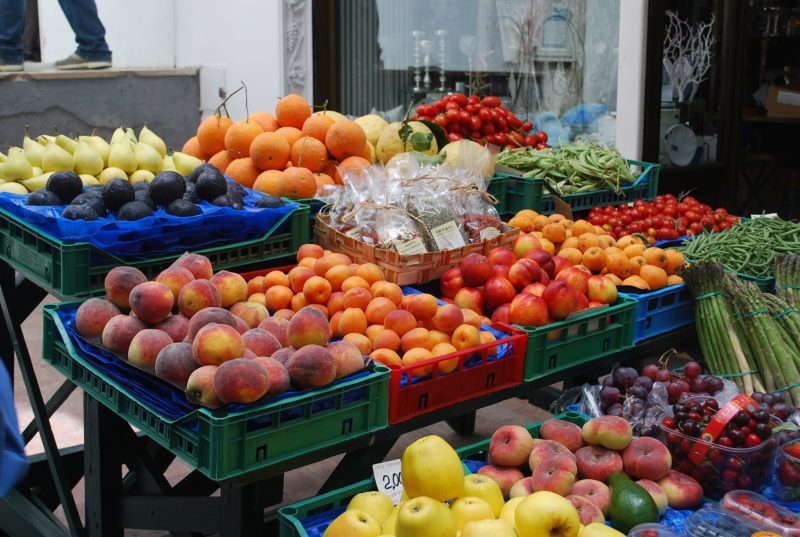Today, the biggest concern for restaurant owners is a nationwide restaurant staff shortage. In the restaurant and food industry, staffing issues continue to be a pain. The problem has intensified now that summer has ended and seasonal student employees have returned to school. COVID-19 cases have increased once again due to the emergence of the Delta variant, and more people–and workers–are testing positive for the virus.
Although a critical labor shortage affects practically every business, the restaurant industry has been particularly hard struck. Furthermore, labor scarcity has a severe impact on all elements of restaurant operations. According to the National Restaurant Association‘s 2021 Mid-Year State of the Restaurant Industry Update, despite a consistent trend of job creation in the first half of the year, eating and drinking establishments are still roughly 1 million jobs or 8%, below pre-pandemic employment levels.
Human jobs will not be lost as a result of automation, nor will the restaurant experience be harmed or the need for human connection be eliminated. Dining out still revolves around the service experience. Restaurants will be able to use technology to automate certain operations and relocate workers to areas where they can still provide a human touch.
Technology can assist in the automation of the food ordering processes. Instead of shouting orders to each other or using printed tokens, restaurants can deploy technology that allows servers to enter orders via a handheld tablet at the guest’s table. Here is how automation can solve the restaurant staff shortage problem.
4 Ways Automation Solves Restaurant Staff Shortage Problems
Here is how you can use automation to its fullest potential and solve the restaurant staff shortage problem.
1. Streamlined FOH And BOH Operations
When it comes to hiring your staff, it is quite simple but keeping good employees is the difficult part. Restaurants can differentiate themselves by providing competitive pay and a safe and friendly work environment. It’s not only a matter of getting enough skilled staff for many restaurant owners. They must also locate qualified personnel to fill the voids left by the departure of more senior and specialized employees. The costs of hiring, training, and retaining their replacements are astronomically high.
Automation does not imply that people will be replaced. It’s all about using technology to automate repetitive chores and streamline restaurant workflows. Brands that strive to deliver excellent customer service need not be concerned.
The dining experience is still centred on the service experience. However, restaurants can certainly use technology to automate certain repetitive tasks and relocate workers to areas where they can still provide a human touch. Automation can be considered in all aspects of operations. Reservation software automates this crucial job, allowing the staff to focus on meeting customer demands and working the floor rather than, for example, answering the phone and collecting reservations. Handheld POS systems can also remove the back-and-forth between the register and the tables, speeding up the payment process and, as a result, giving hungry diners a better experience.
2. Efficient Food Delivery
High-tech restaurants are transforming the way diners pick up their to-go orders while also helping to alleviate labor shortages. Too often, kitchen or wait staff can perform double duty by delivering carry-out orders to clients who are waiting.
Postmates, a food and grocery delivery service with 550 locations across the United States, has unveiled Serve, an autonomous delivery robot. This little robot can carry 50 pounds of stuff and has a 30-mile range, allowing it to perform approximately a dozen deliveries every day, according to Postmates. The first goal is to make deliveries faster by avoiding traffic and travelling on the sidewalk. Takeaway orders are simply loaded into safe lockers for customers or delivery drivers to pick up when they’re ready. This allows employees to focus on more important tasks. Restaurants can use the data provided by the software that powers these lockers to optimize steps in their order fulfilment processes.
Companies are investing in delivery bots because city dwellers demand practically everything to be delivered immediately or on a schedule. Restaurants are also aware of the traffic congestion during peak hours across city streets. Delivery trucks are dangerous because they frequently block bike lanes, fire hydrants, and crosswalks. As a result, restaurants can potentially save a lot of money on last-mile delivery costs, thanks to robots.

3. Smooth Kitchen Workflow
When you have a busy kitchen, more mistakes tend to happen. Automating the order taking processes via handheld tablets right at the guest’s table can make the kitchen function much more efficiently. Using a kitchen display system is another time-saver as it calculates the cooking time and also displays prompts for other meals on the menu.
There will be consistency among cooks and throughout an enterprise restaurant chain in this manner. Human error and miscommunication between workers would be reduced as a result. Customers’ preferences regarding how they engage with restaurants have changed, according to studies. They want convenience, high-quality service, and a seamless experience from start to finish.
4. Self Ordering Kiosks
Self-ordering kiosks have grown commonplace at fast-food and fast-casual restaurants around the world in recent years. Independent eateries, on the other hand, have been considerably more hesitant to adopt this type of self-serve technology than the McDonald’s and Paneras of the globe.
With the arrival of the COVID-19 pandemic, independent businesses are reconsidering their self-ordering kiosks. What was formerly seen to be an expensive and impersonal piece of equipment is now recognised as a cost-effective approach to decrease face-to-face interaction while also keeping guests safe from the coronavirus.
McDonald’s claims that locations that installed kiosks had a 5 percent to 6 percent increase in revenue. Changes in customer behaviour are mostly responsible for driving an increase in sales. For example, customers have grown accustomed to the convenience and quickness of online purchasing and are increasingly expecting the same degree of control, choice, and personalization while dining out. Restaurant kiosks are developed expressly to give a faster and more personalized ordering experience, putting them in a great position to fulfil shifting customer expectations.
Restaurant operators can improve day to day operations and manage existing workforce challenges by investing in a more efficient and effective technological solution. This also permits them to take a breather when it comes to crucial operations management. The restaurant industry’s future is dependent on automation. Restaurants must embrace automation to streamline procedures in order to keep up with customer requests and market trends.
Restaurants would do well to start preparing now, as highly integrated systems will likely be at the forefront of business innovation within a year. As more mid-sized and large chains join the party, restaurant automation will become increasingly more common. The restaurant industry is notoriously competitive, but restaurants of all sizes may stay ahead of the game by implementing automation.
















